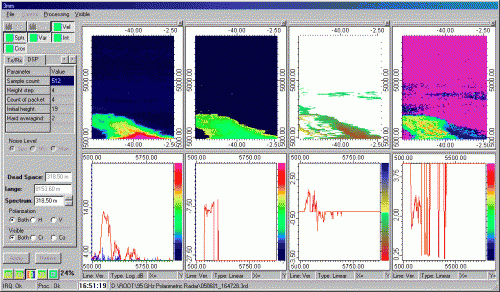Products
The radar is designed for unattended operation, and it provides high-resolution, real-time measurements of profiles of reflectivity, linear depolarisation ratio, Doppler spectrum, radial velocity mean, and velocity variance of clouds and precipitation. Separate 0.5-meter parabolic antennas are used for the transmitter and receiver ends. A polarization independent illuminator is used in the both antennas. In order to realize polarimetric measurements, a ferrite quasioptical polarisation manipulators are introduced between the receiver and its antenna and between the transmitter and the corresponding antenna. The manipulators are computer controlled what enables for a pulse-to-pulse variation of the polarisation of the transmitted pulses and measurement of co- and cross-polarised components of backscattered signals. The radar transmitter is based on a 4 kW spatial-harmonic magnetron. A digital coherent on receiver technique is used for the realisation of Doppler spectrum measurements.

Specifications of the radar
| Transmitter Peak Power, kW | 4 |
| Pulse Width, ns | 50...400 |
| Pulse Repetition Frequency, kHz | 5 |
| Receiver noise figure, dB | 8 |
| Measuring Range, km | 15 |
| Range Resolution, m | 15, 30, and 60 |
| Doppler Velocity Resolution, m/sec | 0.1 |
| Number of Gates | 500 |
| FFT Length | 128, 256, 512 |
| Minimum Dwell Time, sec | 0.1 |
| Antenna diameter, m | 0.5 |
| Sensitivity at 5 km, dBz | -41 |
| Watt consumption, W | 700 |
| Weight, kg | 60 |

A screenshot of the Image control page of the radar user display. There are (from left to right) the intensity, LDR, velocity, and variance windows. Each of these four windows is divided into two subwindows. The upper parts of the windows reflect corresponding height-time maps. The lower parts show instant oscilloscope plots of the incoming data.
